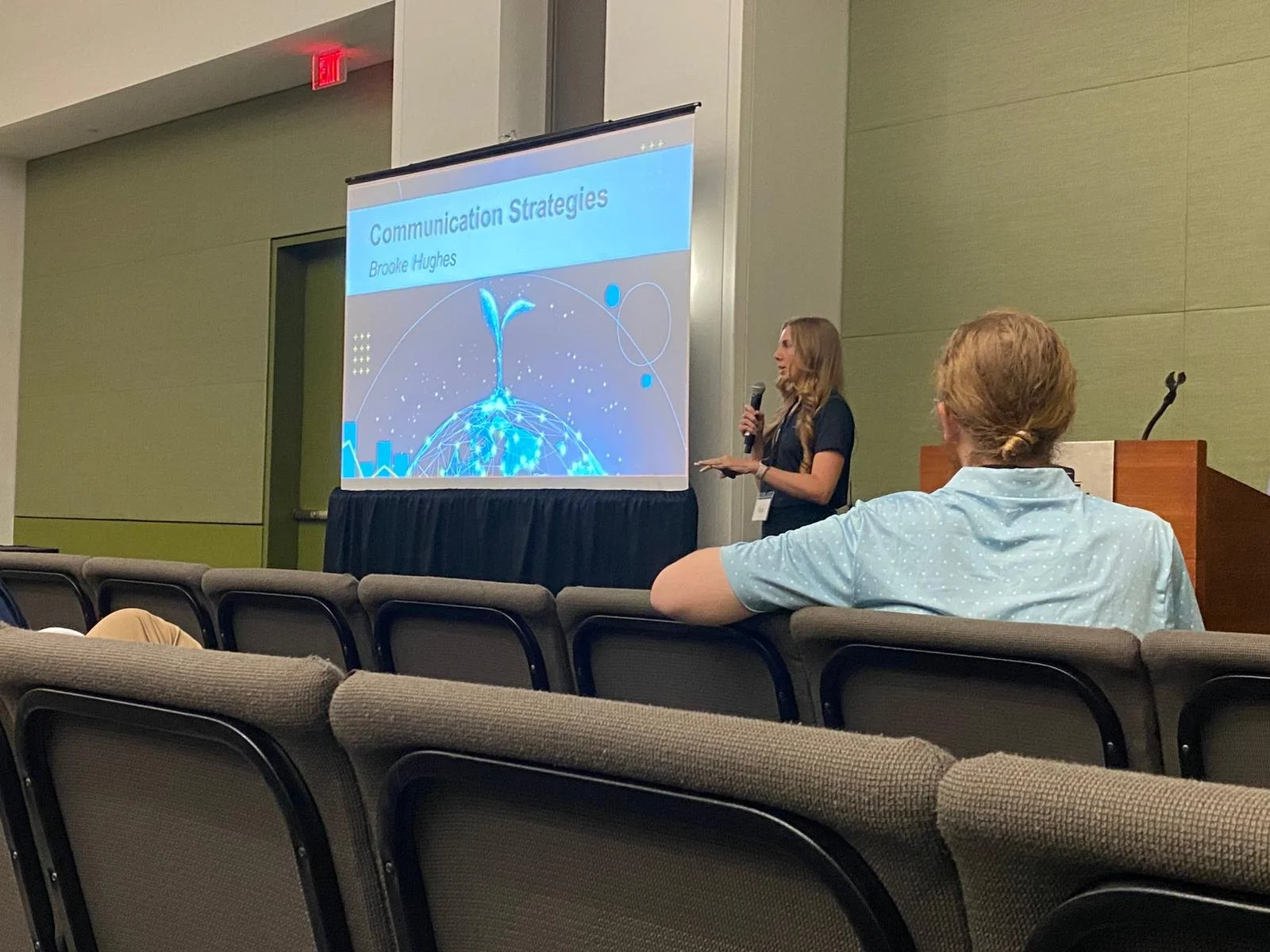Say It Like You Mean It: Communicating Technical Ideas That Truly Land
I had the opportunity to speak at the 2025 John Deere Business Insights & Analytics Conference alongside two incredible colleagues. Together, we led a session on a topic that isn’t always labeled “technical,” but is absolutely essential to technical success: communication.
It’s easy to assume that analytics is all about numbers, code, dashboards, and statistical models. But what we’ve learned time and time again is that brilliant technical work can only go so far if it isn’t communicated well. In fact, strong communication can often be the bridge between insight and action.
The Pilot Analogy
We kicked off our session with an exercise.
I asked the audience to imagine they were pilots. Then, I walked them through a METAR report and a set of taxiing instructions from Air Traffic Control.
The result?
A room full of blank stares and confused faces.
And that was exactly the point.
That brief moment of disorientation was meant to mirror how non-technical audiences often feel when they’re listening to highly specialized, jargon-filled explanations. It’s the discomfort of not having the right context or language to connect the dots.
When we as data professionals default to acronyms, dashboards, and domain-specific language, we risk losing our audience, even if our insights are sound.
Why Communication is a Technical Skill
There’s a common myth that good work speaks for itself. But in the real world of cross-functional teams, limited attention spans, and rapid decision-making, that’s not always true.
Brilliant work doesn’t speak for itself. We do.
And how we say it matters.
In our session, we explored a few core themes for improving communication across technical teams:
📌 Simplify complex ideas. Avoid jargon and internal terminology that might confuse others. Speak plainly, especially when engaging stakeholders who are not data experts.
📌 Use analogies, visuals, and stories. These are not soft tools — they’re powerful communication strategies. A well-placed metaphor or visual can make a concept click in seconds.
📌 Practice empathy and active listening. Truly great communicators tune into their audience. They ask questions, invite feedback, and adjust their message in real time to meet people where they are.
📌 Go beyond presenting data. Your goal should not just be to display charts. It should be to drive decisions. That means providing context, offering recommendations, and becoming a trusted advisor who helps others take action.
From Analysts to Advisors
At its core, data storytelling is about translation. It’s about taking something complex and technical and making it understandable, relatable, and meaningful.
When we stop thinking of ourselves solely as analysts, engineers, or scientists, and start thinking like translators and advisors, we build stronger bridges between technical insight and business value.
This shift doesn’t require sacrificing rigor. It simply requires intention. You can maintain the depth of your analysis while making it accessible to others.
And when we do that, we unlock real impact.
Say It Like You Mean It
Our talk ended with a simple takeaway:
Say it like you mean it.
That doesn’t mean speaking louder or being more animated. It means speaking with clarity, with care, and with an understanding of who your audience is. When we communicate like we truly want to be understood, not just heard, people notice. And they listen.
Final Thoughts
Communication is not separate from your technical skillset. It is a critical part of it. Whether you're presenting to leadership, working with cross-functional partners, or mentoring junior analysts, your ability to connect with others will amplify everything you do.
So the next time you prepare a technical update or share your latest insights, ask yourself:
Who am I talking to?
What do they care about?
How can I make this meaningful for them?
Because when we learn to say it like we mean it, we stop just reporting data. We start influencing decisions.




